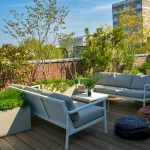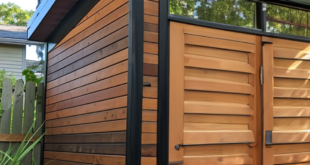Roof gardens have become increasingly popular in urban areas as a way to maximize limited outdoor space and create a peaceful sanctuary above the hustle and bustle of city life. Designing a roof garden requires careful planning and consideration to make the most of the space available and create a space that is both functional and visually appealing.
One of the first considerations when designing a roof garden is the structural integrity of the roof. It is important to consult with a structural engineer to ensure that the roof can support the weight of the garden, as well as any additional structures or features that are planned. The roof will also need to be properly waterproofed to prevent leaks and water damage to the building below.
Once the structural concerns have been addressed, the next step is to decide on the layout and design of the garden. Considerations such as the amount of sunlight the roof receives, the climate of the area, and the desired use of the space will all play a role in determining the layout of the garden. Raised beds, containers, and vertical planters can all be used to make the most of limited space and create a lush, green oasis.
When choosing plants for a roof garden, it is important to select varieties that are well-suited to the conditions of a rooftop environment. Plants that are drought-tolerant, wind-resistant, and able to thrive in shallow soil are ideal choices for a roof garden. Native plants are also a good option, as they are well-adapted to the local climate and require less maintenance.
In addition to plants, consider incorporating other elements into the design of the roof garden, such as seating areas, pathways, or water features. These elements can enhance the functionality and aesthetic appeal of the space, creating a peaceful retreat that is perfect for relaxing or entertaining. Lighting can also be used to illuminate the garden at night and create a cozy ambiance.
Finally, it is important to regularly maintain and care for a roof garden to ensure that it remains healthy and vibrant. This includes watering, fertilizing, pruning, and removing weeds as needed. Regular inspections of the roof should also be conducted to check for any signs of damage or leaks. With proper care and attention, a well-designed roof garden can provide years of enjoyment and beauty for residents and visitors alike.















